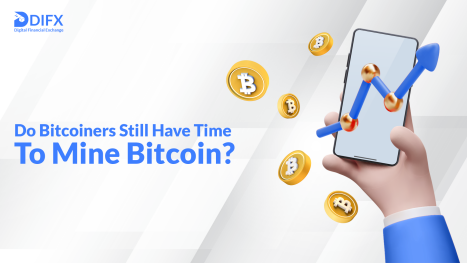
A total of 19,124,681 bitcoins were in circulation as of August 2022. There were 1,875,319 bitcoins available to mine until the 21 million-bitcoin limit was reached at the time.
One of the most distinctive features of Bitcoin (BTCUSD) is its limited currency supply. Bitcoin’s developers, Satoshi Nakamoto, conceived the cryptocurrency as a digital gold currency and limited its maximum supply to reflect the finite amount of gold in existence.
New Bitcoins are added to the Bitcoin supply every 10 minutes, which is the typical time it takes to create a new block.
After every 210,000 blocks, or roughly every four years, the amount of bitcoins created per block is reduced by 50%.
When will Bitcoin reach 21 million?
There is a high probability that bitcoins will never exceed 21 million due to the fact that Bitcoin uses bit-shift operators, that round decimal points to the nearest integer.
As a result of dividing the block reward for creating a new Bitcoin block in half and determining the new reward, it may round down from 0.001 bitcoin to 0.00000001.
The lowest unit of measurement in the Bitcoin network is a satoshi, which cannot be divided in half.
In the case of dividing a satoshi into two to determine a new reward amount, the Bitcoin blockchain uses bit-shift operators to round down to the nearest whole integer.
Bitcoin block rewards are continuously rounded down in fractions of satoshis, which will result in fewer than 21 million bitcoins being awarded.
As the number of bitcoins released every block decreases by half every four years, it is predicted that the final bitcoin won’t be created until 2140. As of May 2020, there are only 6.25 new bitcoins created every block, a decrease from 50 when Bitcoin was first introduced.
If all 21 million bitcoins have been mined, what happens?
The maximum number of bitcoins will not be increased, even if it is slightly less than 21 million in the end. Despite the fact that Bitcoin miners will be compensated by transaction processing fees, Bitcoin transactions will continue to be pooled and processed.
It is expected that Bitcoin miners will be affected when Bitcoin reaches its upper supply limit, but how much will depend on Bitcoin’s maturation as a cryptocurrency. Bitcoin miners may still be able to earn from transaction processing fees alone in 2140 if the Bitcoin blockchain processes many transactions.
Even with low transaction volumes and the absence of block rewards, miners will still be able to profit if Bitcoin is primarily used as a store of value in 2140. When executing high-value or large batches of transactions, miners can charge hefty transaction fees, with more efficient “layer 2” blockchains like Lightning Network collaborating with Bitcoin to make it possible to spend bitcoin on a daily basis.
To Wrap Things Up
In the year 2140, would Bitcoin work similar to cash or gold bars? Since Bitcoin’s ecosystem is constantly evolving, it is possible, if not likely, that Bitcoin will continue to evolve for years to come.
The 21-million coin cap will be reached, however, so no more bitcoins can be produced. Reaching this supply limit will have the greatest impact on Bitcoin miners, but Bitcoin investors may also suffer as a consequence.
About Digital Financial Exchange
Digital Financial Exchange (DIFX) is a leading centralized cross-asset crypto exchange launched in 2021 with a mission to bridge traditional and digital markets. It allows users to trade between multiple asset classes that include indices, forex, crypto, metals, and commodities, just
to name a few. The DIFX fully-insured crypto wallet comes from a partnership with Fire Blocks, one of the leading crypto custodians in the world.
Previous Articles:
- 3 “weighty” opinions on Solana’s (SOL) future
- BlackRock provided a loan to a bankrupt crypto mining company
- Italy: 26% tax on cryptocurrency gains
- New weekly 30% plunge for Solana
- Y00ts and DeGods Are Leaving Solana
